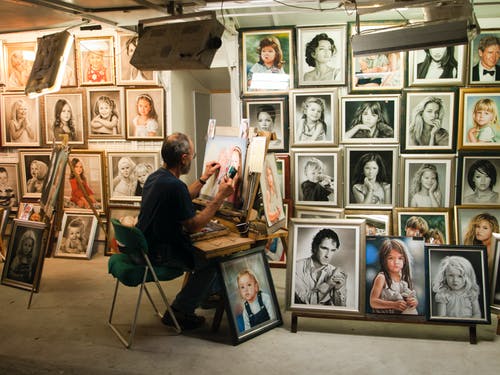There is a general notion that drugs increase your creative capabilities. Granted, drugs and alcohol influence your mindset in ways that can springboard thoughts and ideas you wouldn’t normally have, they do not necessarily unlock some higher level of genius.
Some even suggest that substances unlock a part of consciousness that is normally suppressed. In fact, some of history’s greatest visual artists created well-known masterpieces under the influence of drugs and alcohol. While this is yet unproven, let’s look at likely symptoms that a visual artist is addicted.
First, who is a visual artist? A visual artist is one that creates art forms such as ceramics, drawing, painting, sculpture, printmaking, design, crafts, photography, video, filmmaking and architecture.

Many artistic disciplines (performing arts, conceptual art, textile arts) involve aspects of the visual arts as well as arts of other types. Also included within the visual arts are the applied arts such as industrial design, graphic design, fashion design, interior design and decorative art.
Visual artists are illusionists capable of creating something that may evoke an emotional response or may stimulate the viewer’s intellect or both. It is totally understandable why people will assume they were under some influence. That is not to say however, that visual artists don’t get addicted. In fact, they are very vulnerable to addition whether drugs, alcohol, or their art itself.
Some of the tell-tale signs are typical of addicts but some signs distinguish them; these include
- Showing reclusiveness
- Lack of interest or obsession with work
- Secretiveness
- Weight loss
- Blood shot eyes
- Mood changes